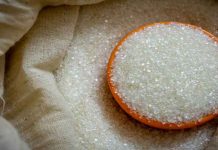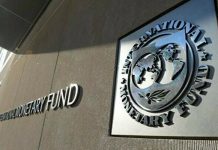ISLAMABAD: Bakery and confectionery industry in Pakistan sees huge growth, WealthPK reported on Friday.
The bakery sector is characterised by a variety of items that find their way onto the market on a regular basis. Pakistan’s bakery and confectionery industry grew at an average annual rate of 6.5 percent to 7.5 percent in 2016-17, Pakistan Biscuit and Confectionery Manufacturers Association told WealthPK.
The industry as a whole can be classified into two categories: branded and generic. Raw material pricing and changing customer trends influence the product demand.
Pakistan’s exports of bakery and bakery products, on the other hand, climbed from Rs3.10 billion in 2015-16 to Rs3.14 billion in 2016-17. Bakery and Bakery Products are also exported to different countries.
Afghanistan, Australia, Saudi Arabia, Japan, the United Kingdom, the United States, and the United Arab Emirates are the most important markets. Overall, Rusk, Toasted bread, and product exports have been steadily increasing. Due to increased competitiveness in the world market, Rusk, Toasted bread and goods exports increased from 125 thousand tonnes valued at Rs48 million in 2015-16 to 170 thousand tonnes valued at Rs 50 million in 2016-17, WealthPK reported.
In Pakistan, a variety of local and multinational biscuit manufacturers can be found in various places. According to a Gallup Pakistan survey conducted by the Gilani Research Foundation, 62 percent of Pakistanis consume packaged biscuits, whereas 31 percent enjoy open bakery biscuits.
Despite issues in the energy sector and counterfeiting, Pakistan’s biscuit business has developed dramatically, with local producers earning more than Rs 45 billion in sales income in the previous financial year. Several household brands have emerged on the scene and achieved success in the sector over the last decade.
However, rising raw material prices, a heavy reliance on advertising and brand promotion, and excise and import levies on raw materials are all difficulties for future growth and new entrants. The size of Pakistan’s food product market was PKR 155 billion in FY20 (PKR 130 billion in FY19), up 19 percent YoY, owing mostly to the impact of inflation and the resulting increase in food product prices in 9MFY20.
Several contemporary plants that create high-quality goods have been developed in various parts of Pakistan. The manufacturers not only suit local needs, but also export goods to other countries. Sugar candy, chocolates, and biscuit exports have increased dramatically in the previous ten years.
This industry has a lot of room to grow, notably in Europe and the Middle East. As a result, there is a lot of potential for setting up confectionery and food processing units to make full use indigenous raw materials and earn foreign cash by exporting these products. Pakistan also imports a large amount of confectionery and chocolates, as well as other food goods. Imports of these things could be reduced to a manageable level if quality product production is enhanced and prices are reduced.
Confectionery items, especially non-traditional items, have a lot of potential for export, but a lot of issues are preventing confectionery from growing through export. Informal cottage operators who mimic popular products under their own brand name or fraudulently utilize the names of well-known brands in the market pose a significant threat to the professional confectionery business.
Such operators are especially prevalent in rural areas, where registered businesses are few. However, if raw material prices rise, the majority of these operators, who lack financial power, would be swept out of the market. Pakistan is the world’s fifth largest sugarcane producer and eighth largest sugar producer and consumer.
Sugarcane is farmed on 1.2 million hectares and is used as a raw material by 89 sugar mills. After textiles, sugar is the country’s second largest agriculture-based sector. Additional sugarcane research and development initiatives in line with international standards could assist Pakistan to not only meet domestic demand of bakery and confectionery items but also raise foreign exchange in the relevant industry. -INP






